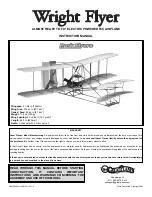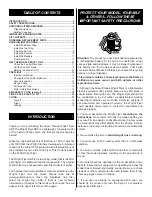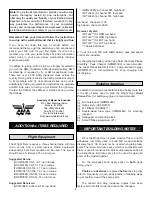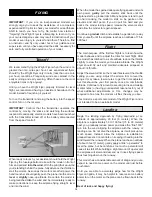
❏
1. Assemble the elevator horn linkage. Slide a nylon torque
rod horn onto the 1/16" x 4-3/8" [1.6 x 111mm] unthreaded
wire. Slide a 1-3/4" [44mm] brown plastic tube onto the
wire on each side of the torque rod horn.
❏
2. The top canard has the elevators molded into it.
Install a nylon control horn on the bottom of the right
elevator with two 2-56 x 3/8" [9.5mm] machine screws and
the nylon backplate. Do not tighten the screws too much.
The holes in the control horn for the clevis should face
forward. Do not install a control horn on the left elevator.
Note: Before mounting the horn, drill out the two middle
clevis holes in the control horn with a 5/64" [2mm] drill bit.
❏
3. Insert the top canard into the fuselage frame. The photo
shown above and the following photo have been taken from
the bottom of the model.The elevator faces the rear of the model.
❏
4. Insert one end of the elevator horn linkage into the
right elevator horn already mounted on the elevator. It
should be inserted into the second hole closest to the
elevator. Insert the other end of the elevator horn linkage
into the same hole of another nylon control horn. Install this
control horn on the left elevator with two 2-56 x 3/8" [9.5mm]
machine screws and a nylon backplate.
❏
5. Thread a 2-56 hex nut and 2-56 metal clevis onto the
elevator pushrod already installed in the fuselage frame.
Connect the clevis to the elevator control horn. Be sure to
tighten the hex nut against the clevis after it has been
adjusted properly.
❏
6. Insert the bottom canard into the fuselage frame.
Before installing it, check that the shape and alignment will
match the top canard. Note: Only the top stabilizer has
operating elevators.
Install the Canards
10


































